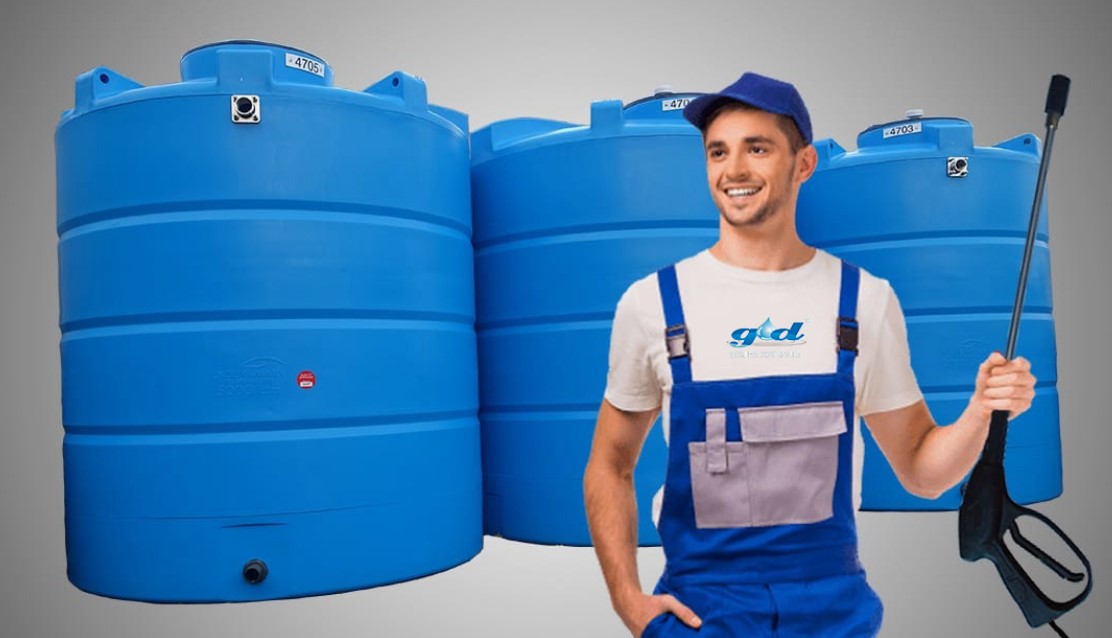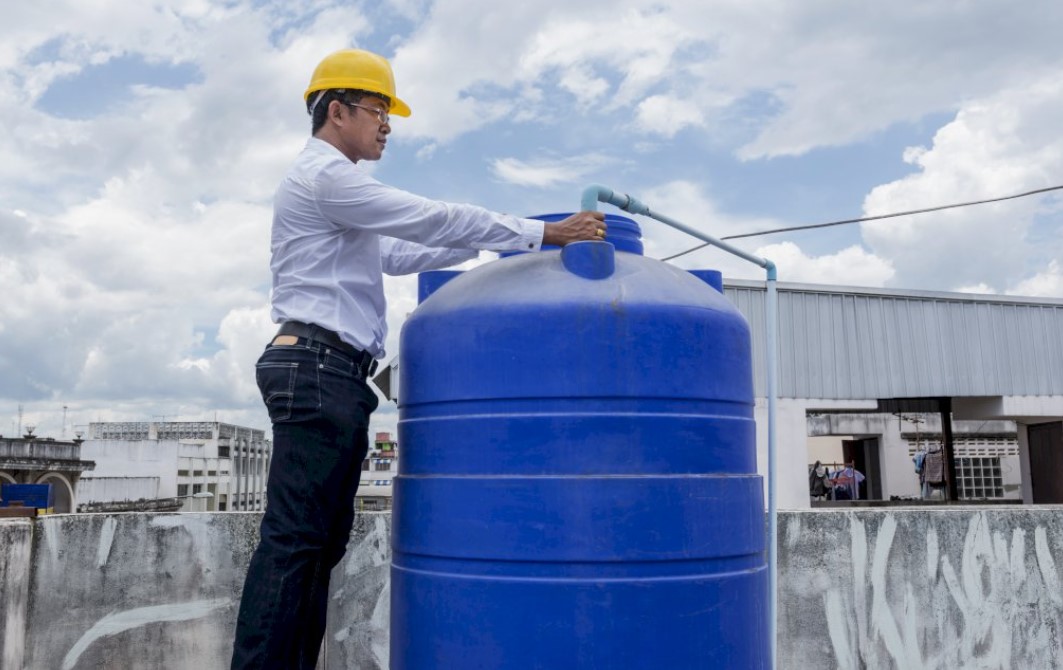Dubai’s climate, characterized by high temperatures, low humidity, and occasional sandstorms, presents unique challenges for maintaining water tanks. These environmental factors can significantly impact the condition of water storage systems, necessitating specific maintenance strategies to ensure the safety and quality of stored water. This article explores how Dubai’s climate affects water tank maintenance, detailing the implications of heat, humidity, and other climatic conditions, and providing insights into effective maintenance practices.
High Temperatures
Accelerated Bacterial Growth
Dubai’s high temperatures, often exceeding 40°C (104°F) during summer, create an ideal environment for bacterial growth in water tanks. Bacteria such as Legionella, which can cause Legionnaires’ disease, thrive in warm water conditions. The elevated temperatures can accelerate the growth of these microorganisms, posing health risks to residents and users of the water supply.
Regular water tank cleaning is essential to mitigate this risk. Cleaning and disinfecting water tanks at least once a year, as mandated by the Dubai Municipality, helps control bacterial growth and ensures the water remains safe for consumption.
Increased Evaporation Rates
High temperatures also lead to increased evaporation rates, which can affect the water levels in storage tanks. Evaporation can concentrate dissolved solids, making the water harder and potentially causing scaling on tank surfaces and internal components. This buildup can reduce the efficiency of water systems and necessitate more frequent cleaning and maintenance to remove the deposits.
Low Humidity
Corrosion and Material Degradation
Dubai’s low humidity levels can contribute to the corrosion and degradation of water tank materials, particularly if the tanks are not adequately maintained. Metal tanks are especially vulnerable to corrosion when exposed to dry air, which can lead to leaks and structural damage. Even non-metallic tanks can suffer from material fatigue due to the harsh environmental conditions.
To counteract these effects, regular inspections and maintenance are crucial. Protective coatings and corrosion-resistant materials should be used to extend the lifespan of water tanks and prevent costly repairs.
Seal and Gasket Deterioration
Low humidity can cause the seals and gaskets in water tanks to dry out and deteriorate over time. These components are essential for preventing leaks and maintaining the integrity of the tank. As they degrade, the risk of leaks and contamination increases, necessitating frequent checks and replacements to ensure the system remains secure and functional.

Sandstorms and Dust Accumulation
Contamination Risk
Sandstorms are a common occurrence in Dubai, and they pose a significant risk of contamination for water tanks. Dust and sand particles can enter water storage systems through vents and other openings, leading to sediment buildup at the bottom of tanks. This sediment can harbor bacteria and other contaminants, compromising water quality.
Effective measures to prevent contamination include installing fine mesh screens on vents and regular inspection and cleaning of tanks to remove accumulated sediment. Ensuring that tanks are sealed properly can also help minimize the ingress of dust and sand.
Equipment Wear and Tear
Sand and dust can also cause wear and tear on water tank components, including pumps, valves, and filtration systems. The abrasive nature of sand particles can damage these components, reducing their efficiency and lifespan. Regular maintenance and cleaning of these parts are necessary to ensure the smooth operation of the water storage system.
UV Radiation
Algae and Biofilm Formation
Dubai’s intense sunlight and high UV radiation levels can promote the growth of algae and biofilm in water tanks, particularly those that are not fully opaque or properly shaded. Algae and biofilm can clog pipes, filters, and pumps, reducing the efficiency of the water system and potentially leading to contamination.
To combat algae growth, it is important to use opaque or UV-resistant tank materials and ensure that tanks are installed in shaded areas. Regular cleaning and the use of algaecides can also help manage and prevent algae and biofilm formation.
Water Quality Management
Mineral Content
Dubai’s water supply, primarily sourced from desalinated seawater, has a high mineral content. These minerals can precipitate out of the water, forming scales and deposits on tank surfaces and components. This scaling can reduce the efficiency of water heaters and other equipment, leading to higher energy consumption and maintenance costs.
Regular descaling treatments and the use of water softeners can help manage mineral buildup and maintain the efficiency of the water system. It is also important to monitor the water quality regularly to detect any changes in mineral content that may affect the maintenance schedule.
Microbial Contamination
The combination of high temperatures, low humidity, and potential contamination from sandstorms creates an environment conducive to microbial contamination. Regular water quality testing is essential to ensure that microbial levels remain within safe limits. The World Health Organization (WHO) provides guidelines for acceptable microbial levels in drinking water, which should be adhered to for maintaining public health.

Best Practices for Water Tank Maintenance
Regular Cleaning and Disinfection
Adhering to a regular cleaning and disinfection schedule is crucial for maintaining water quality. This includes physically scrubbing the tank interior, removing sediment, and disinfecting the surfaces. Certified professionals should be employed to ensure that the cleaning process meets regulatory standards and effectively eliminates contaminants.
Use of Advanced Monitoring Technologies
The use of advanced monitoring technologies, such as IoT-enabled sensors, can help track water quality parameters in real-time. These sensors can monitor temperature, pH, turbidity, and microbial levels, providing early warnings of potential issues. This proactive approach allows for timely interventions and reduces the risk of contamination.
Protective Measures Against Environmental Factors
Implementing protective measures against environmental factors such as sandstorms and UV radiation can help maintain water tank integrity. This includes using tank covers, installing tanks in shaded areas, and ensuring proper ventilation systems to prevent dust ingress. Additionally, selecting corrosion-resistant materials and applying protective coatings can extend the lifespan of water tanks.
Regular Inspections
Conducting regular inspections of water tanks and associated components is essential for identifying and addressing potential issues before they become significant problems. Inspections should include checking for signs of corrosion, leaks, seal integrity, and the condition of gaskets and other components. Detailed records of inspections and maintenance activities should be maintained to track the tank’s condition over time.
Regulatory Compliance
Adhering to Local Regulations
Compliance with local regulations is mandatory for maintaining water tank systems in Dubai. The Dubai Municipality has established guidelines for water tank cleaning and maintenance, which must be followed to ensure public health and safety. Regular audits and inspections by regulatory authorities help enforce these standards and ensure that water storage systems are properly maintained.
Importance of Certification
Employing certified professionals for water tank maintenance ensures that the work is performed according to industry standards and best practices. Certification programs provide training on the latest cleaning techniques, safety protocols, and regulatory requirements. Hiring certified personnel helps ensure that maintenance activities are effective and compliant with local regulations.
Future Trends in Water Tank Maintenance
Adoption of Smart Technologies
In Dubai, the future of water tank maintenance is poised for a significant transformation with the growing acceptance of smart technologies. IoT-enabled devices, automated cleaning systems, and advanced monitoring solutions are set to revolutionize maintenance activities, boosting efficiency and effectiveness. These technologies offer the advantage of providing real-time data, which can be used for predictive maintenance and minimizing the chances of contamination.
Focus on Sustainability
Sustainability will become a key focus in water tank maintenance practices. This includes using eco-friendly cleaning agents, minimizing water waste during cleaning processes, and implementing energy-efficient systems. Sustainable practices not only benefit the environment but also contribute to long-term cost savings and compliance with regulatory requirements.
Conclusion
Dubai’s climate poses unique challenges for water tank maintenance, requiring specific strategies to ensure the safety and quality of stored water. High temperatures, low humidity, sandstorms, and UV radiation all impact the condition of water tanks and necessitate regular cleaning, inspection, and maintenance. Adhering to best practices, leveraging advanced technologies, and complying with regulatory standards are essential for effective water tank maintenance.
By understanding the implications of Dubai’s climate and implementing appropriate maintenance strategies, property owners and managers can ensure that their water storage systems remain in optimal condition, providing safe and clean water for residents and users. For more information on regulatory requirements and guidelines, visit the Dubai Municipality website.

Cyclist, father of 2, fender owner, International Swiss style practitioner and HTML & CSS lover. Working at the intersection of beauty and mathematics to create not just a logo, but a feeling. Check me out on Dribbble or Medium.
